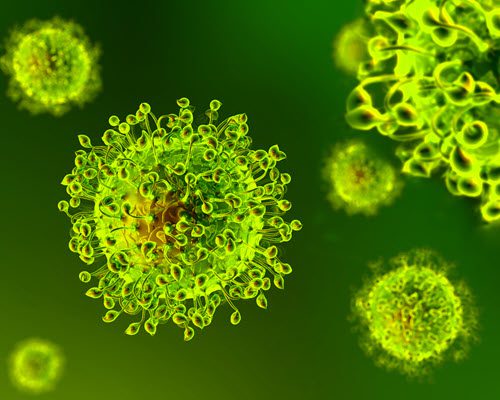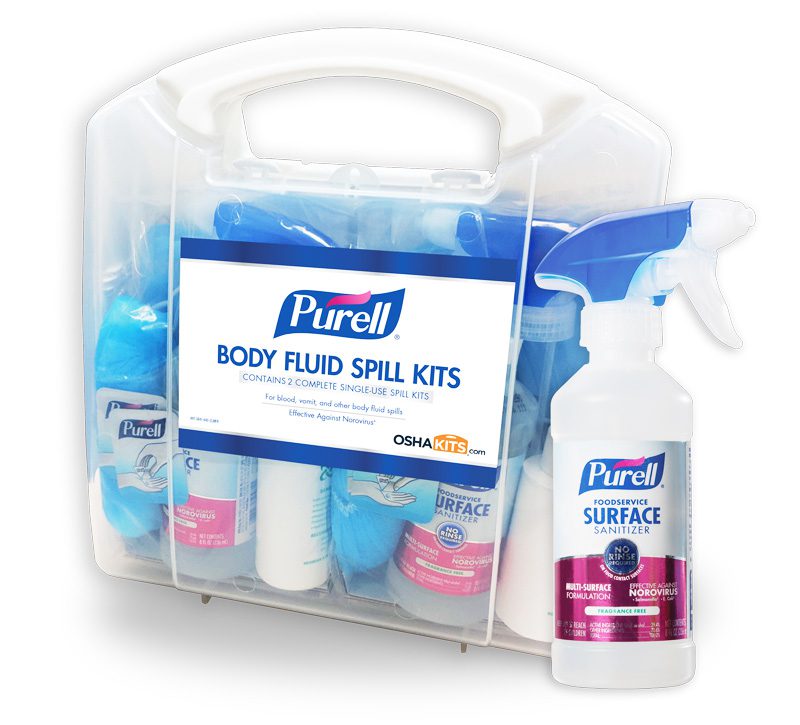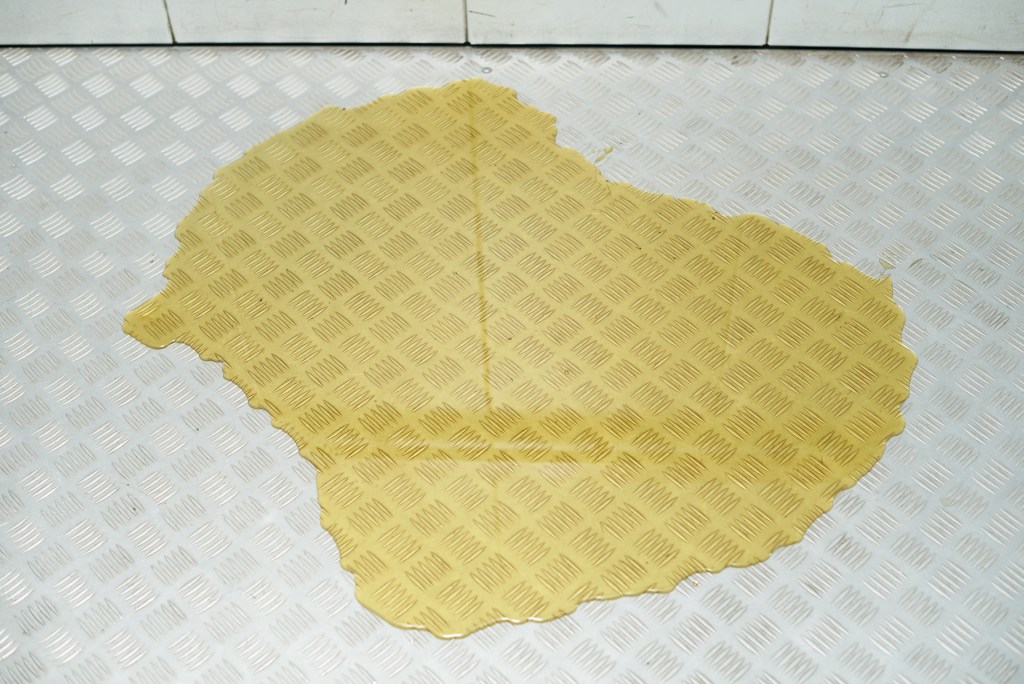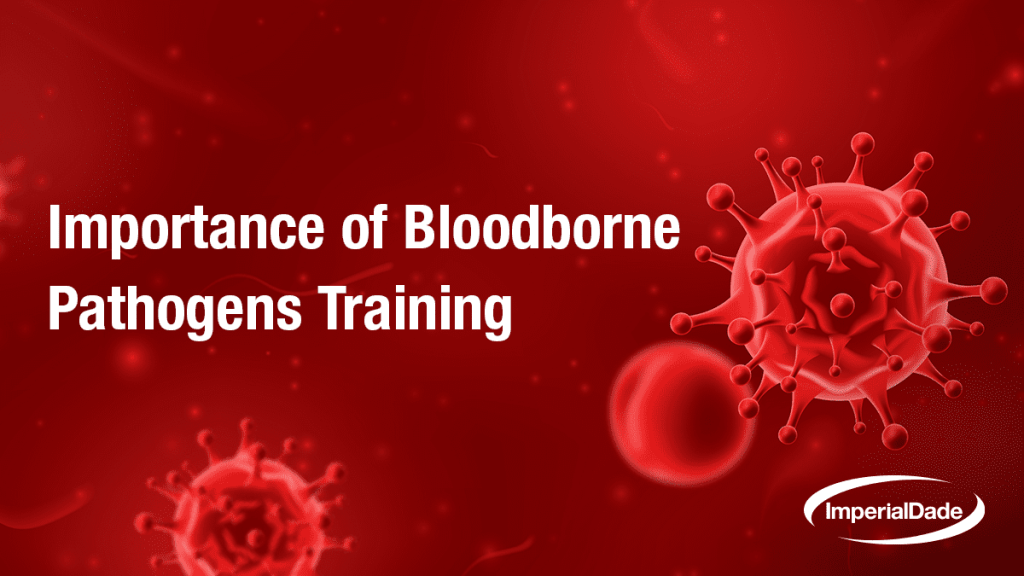Did you know that each year there are approximately three million exposures to bloodborne pathogens in the workplace?
Bloodborne pathogens pose a serious risk to the health and wellness of both employees and other building occupants. This risk becomes even more serious when the necessary materials, procedures, and training are not in place to properly address bloodborne pathogens and other bodily fluid spills.
While spills of this nature are commonly associated with healthcare settings, it’s important to understand that they can occur in any facility, regardless of industry.
For that reason, every facility must establish a comprehensive response plan to effectively manage and mitigate the impact of bodily fluid spills. If your facility lacks the necessary response plan, don’t worry- we’ve got you covered.
In this article, we’re going to go over proper methods for disposing of and cleaning up bloodborne pathogens so that you can maintain a safe and compliant workplace.
Let’s start by taking a closer look at what a bloodborne pathogen is and how they’re transmitted.
What Are Bloodborne Pathogens?
To understand bloodborne pathogens, you first have to know what a pathogen is.
What is a pathogen?

A pathogen is any organism that causes disease. There are four types of pathogens: viruses, bacteria, fungi, and parasites.
Pathogens include the common cold, meningitis, strep throat, E. coli, and Lyme disease.
Bloodborne pathogens are a group of infectious microorganisms, specifically viruses, bacteria, and parasites, that have the potential to cause disease when present in human blood.
It’s also important to know about other potentially infectious materials (OPIMs).
What are OPIMs?
OPIMs is a broad term used to encompass other potentially infectious bodily fluids, such as vomit or diarrhea, that are also common outside of the healthcare industry.
Anything in this article that is said of bloodborne pathogens also applies to OPIMs.
What Are the Most Common Bloodborne Pathogens?
There are many bloodborne pathogens, but these are the three most common:
- Hepatitis B (HBV)
- Hepatitis C (HCV)
- Human Immunodeficiency Virus (HIV)
How Are Bloodborne Pathogens Transmitted?
There are four methods of transmission when it comes to bloodborne pathogens.
- Direct Contact
- Indirect Contact
- Airborne Transmission
- Vector-Borne Transmission
Let’s take a closer look at each.
1. Direct Contact
Direct contact occurs when infected blood or other bodily fluid from one person directly enters another person’s body via an entry site. Some examples of an entry site include a cut, abrasion, or needle stick.
2. Indirect Contact
Indirect contact occurs when a person’s exposed skin, like an open wound, for example, touches an object or tool that contains infected blood or bodily fluid from an infected person.

3. Airborne Transmission
Airborne transmission occurs when a person inhales infected droplets or particles from an infected person. Examples of this include through a cough or sneeze.
4. Vector-Borne Transmission
Vector-borne transmission occurs when a parasite transmits viruses and bacteria from human to human or animal to human. Some examples of how this can happen include mosquitoes, ticks, and lice.
How Clean Up Bloodborne Pathogens
Now that we’ve covered the basics of bloodborne pathogens and OPIMs, let’s review how to clean up bloodborne pathogens.
Your facility’s Exposure Control Plan (ECP) should outline its own bloodborne pathogen clean-up procedures. If so, be sure to follow those. Otherwise, the steps we cover in this section are a good, general outline for how to clean up bloodborne pathogens and stay compliant with OSHA standards.
Here are the eight steps for bloodborne pathogen cleanup:
- Isolate the Affected Area
- Prepare PPE
- Gather Supplies
- Bulk Spill Cleanup
- Deep Clean and Disinfection
- Safe Disposal & Waste Management
- PPE Removal
- Record and Report
Let’s take a closer look at each one.
1. Isolate the Affected Area
The first step is to isolate the area to prevent anyone else from coming into contact with the potentially infectious materials.
For big spills, section off the area by surrounding it with barricades. For small spills, isolate the area by marking it with signage or outlining the spill if the surface material permits it.
If possible, have another individual stand watch to prevent others from interacting with the affected area while you prepare PPE and gather other required supplies.
2. Prepare PPE
The second step is to prioritize personal safety.
Your facility should have a bloodborne pathogen clean-up kit on hand. This kit contains everything you’d need to safely handle a bodily fluid spill, including cleaning supplies, PPE, and bloodborne pathogen clean-up procedures.
If you don’t have access to a bloodborne pathogen clean-up kit, gather up the following PPE: disposable gloves designed for biohazard removal, protective eyewear, a mask, and a gown.
The proper PPE depends on the size and nature of the spill; some spills may not require eyewear, a mask, or a gown, but you can never be too safe when it comes to PPE.
The Centers for Disease Control, or CDC, recommends a certain sequence for donning PPE.
First, put on the gown. Ideally, this should fully cover the torso from neck to knees, arms to end of wrist, and wrap around the back. Make sure to fasten it to the back of the neck and waste, if applicable.
Next comes the mask. Secure ties or elastic bands at the middle of the head and neck. Fit the flexible band to the bridge of the nose. Perform a fit-check to make sure it properly fits to the face and below the chin.
Then, place goggles or a face shield over your face and eyes, adjusting it to fit best.
Lastly, put on disposable gloves. These should extend to cover the wrist of the isolation gown.
Once you have the proper PPE, gather all the required cleaning and disinfecting supplies.
3. Gather Supplies

As mentioned in the previous step, if you have a bloodborne pathogen clean up kit all the necessary cleaning and disinfecting supplies will be in there.
Otherwise, gather the following supplies: disposable absorbent towels, EPA-registered disinfectants, disposable bags, a rigid container, such as a thick plastic bucket or a sturdy cardboard box, a mechanical pickup tool, like a pair of tongs, forceps, or a brush and dustpan, and any cleaning other supplies you think will be necessary.
Once the cleanup prep is done, it’s time for step four.
4. Bulk Spill Cleanup
The initial cleanup involves using disposable towels to absorb the bulk of the bodily fluid spill.

Perform this step by placing towels over the spill and covering it completely. Allow some time for the towels to soak up the waste before carefully disposing of them in designated disposable bags. It’s a good idea to secure the bags within a rigid container to prevent any potential leaks and contamination.
You can use cleaning equipment like a wet/dry vac to aid in the initial cleanup, but it isn’t necessary in most cases. If you do, just make sure to thoroughly clean and disinfect the equipment afterward.
If the spill involves any sharp objects, such as glass shards, use a mechanical pickup tool to place them in a disposable bag. Any bag container with sharp objects must be secured within a rigid container, as there is a higher tear risk.
After performing the initial cleanup, you can move on to step five.
5. Deep Clean and Disinfection
Now that the majority of the spill has been removed, it’s time to clean and disinfect the area.
It’s important to understand that cleaning and disinfecting are completely separate processes. Cleaning physically removes germs, dirt, and other impurities from a surface, while disinfecting kills germs. Disinfectants do not clean soil from surfaces.
When it comes to cleaning and disinfecting you must use a two-step process.
Two-Step Process
In the two-step disinfectant process, the surface is cleaned and disinfected using two different products.
First, a cleaning agent is applied to remove visible and loose soils from the surface or object.
Second, a disinfectant is applied to the surface or object.
Keep in mind that you can’t just use any disinfectant for bloodborne pathogen cleanup; this step must be performed using an EPA-registered disinfectant that is specifically designed for eliminating bloodborne pathogens.
Pro Tip: You must ensure you’re using the right disinfectant by making sure that it specifically mentions HIV or HBV on the label or efficacy data sheet.
Another crucial detail you must pay attention to is the manufacturer’s recommended guidelines for contact time. With that in mind, thoroughly clean and disinfect the affected area. When complete, proceed to the sixth step.
6. Safe Disposal & Waste Management
Bodily fluid materials are considered hazardous waste and are subject to specific guidelines for disposal.
First, check with your local authorities regarding the guidelines and regulations for bloodborne pathogen and OPIM disposable relevant to your locality and industry.
If no such guidelines exist at your facility, these materials have to be treated and disposed of by a licensed biohazard disposal company.
Using one of these companies ensures that the waste is disposed of in accordance with regulatory standards. For example, if you were to dump so much as a single bag filled with bodily waste materials into a dumpster, that whole dumpster becomes hazardous waste, and your facility will be fined accordingly.
If a biohazard bag is available, use it to secure the bodily fluid spill materials. Otherwise, use a disposable bag. Place the bag in a secondary rigid container for protection against punctures or tears.
Make sure that PPE is still on for handling any bag with bodily fluid spill materials and that each bag is properly sealed. After you have finished cleaning and disposing, the PPE can then be doffed and properly disposed of.
7. PPE Removal
Generally, PPE should be doffed in the reverse order that it was donned.
As for how to doff PPE, the CDC offers specific guidelines regarding the proper doffing techniques for various forms of PPE. Refer to their guidelines for further information.
Pro Tip: The Imperial Dade Cleaning Institute offers training for proper donning and doffing of PPE. Reach out to schedule a training session for your facility!
After removing PPE, it’s crucial to thoroughly wash your hands with soap and running water. While the bloodborne pathogen clean up kit will include alcohol hand wipes, these are only meant to address hand hygiene until you can get to soap and water.
Handwashing is vital because it significantly minimizes the risk posed by any lingering contaminants.
If any non-disposable items were recovered during the cleanup, now would be the time to meticulously clean and disinfect them.
Once PPE has been removed, it’s time to finalize the waste management step.
8. Record and Report
With the bulk of the heavy lifting out of the way all that’s left to do is record and report the incident.
An official record of the incident, including the date, time, circumstances of the exposure, and any actions taken in response to it, should be made. The record should be reported to a supervisor, or any other individual identified by your facility’s ECP. If any medical personnel were present at the scene, they should also receive a copy of the report.
What are OSHA Requirements for Bloodborne Pathogens?
The Occupational Safety and Health Administration (OSHA) is a government agency dedicated to the proposition that no worker should have to choose between their life and their job.
OSHA protects workers through its Bloodborne Pathogens Standard. The standard outlines what employers must do to protect workers who are occupationally exposed to bloodborne pathogens or other OPIMs. To stay compliant with the Bloodborne Pathogen standard, employers need to be recertified every year.
To comply with the standard, employers must do all of the following:
- Establish an Exposure Control Plan (ECP)
- Update ECP annually
- Implement the use of universal precautions
- Identify and use engineering controls
- Identify and ensure the use of work practice controls
- Provide personal protective equipment (PPE)
- Make hepatitis B vaccinations available to all workers with occupational exposure
- Make available post-exposure evaluation and follow-up to any occupational exposed worker who experiences an exposure incident
- Use labels and signs to communicate hazards
- Provide information and annual training to workers
- Maintain worker records
Final Thoughts
Bloodborne pathogens pose a serious risk to the wellness of employees, guests, and other building occupants.
Adhere to proper cleanup procedures to keep the people in your building safe and protect your business from legal liabilities.
If your facility doesn’t have any bloodborne pathogen clean-up procedures in place, get in touch with an Imperial Dade representative about attending a Bloodborne Pathogens workshop. Our Experts will review the information, tools, and precautions needed to reduce the risk of occupational exposure and safeguard their health in the workplace.
Get in touch with one of our representatives at an Imperial Dade facility near you if you’re interested in learning more about employer requirements and the OSHA Bloodborne Pathogens Standard, if you want hands-on procedural training for proper bloodborne pathogen cleaning and disposal, or if you want to stock your facility with a bloodborne pathogen clean up kit.
Check Out These Related Articles and Videos:
- What is Personal Protection Equipment (PPE)? Ensuring Safety in the Workplace
- Commercial Cleaning Coach – The Importance of Labeling Secondary Containers
- What is an emergency spill response plan & does your facility have one?
- Safety Checklist: 6 Points of Personal Protective Equipment
- How to Use a Wet/Dry Vac in 5 Steps
- What Are The Types of Commercial Disinfectants
- What is the Difference Between Cleaning and Disinfecting?
- How to Get Rid of Sticky Floors After Mopping
- Proper Handwashing Steps: Hand Hygiene 101
